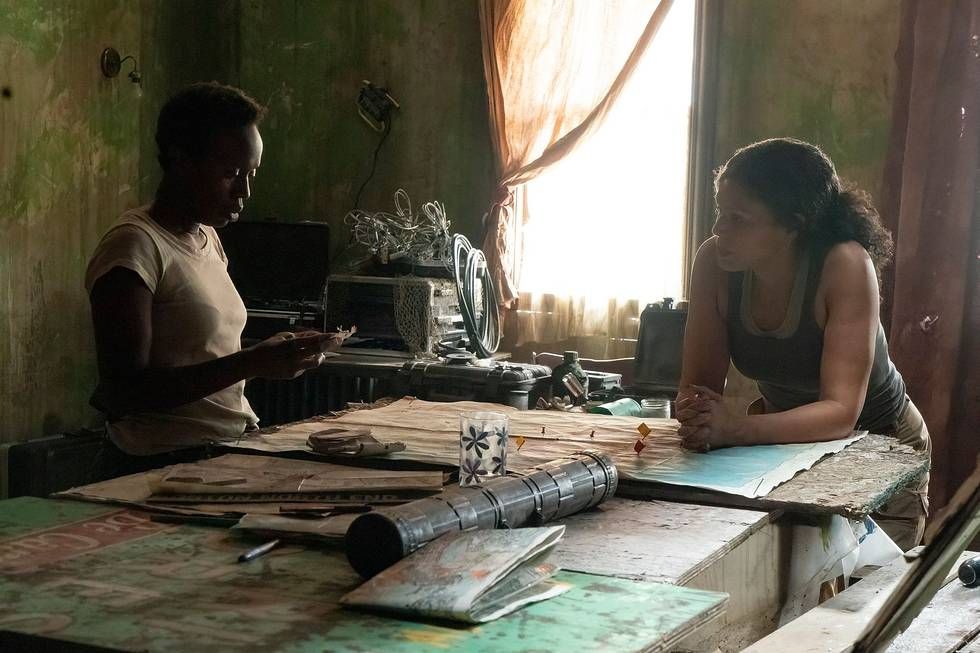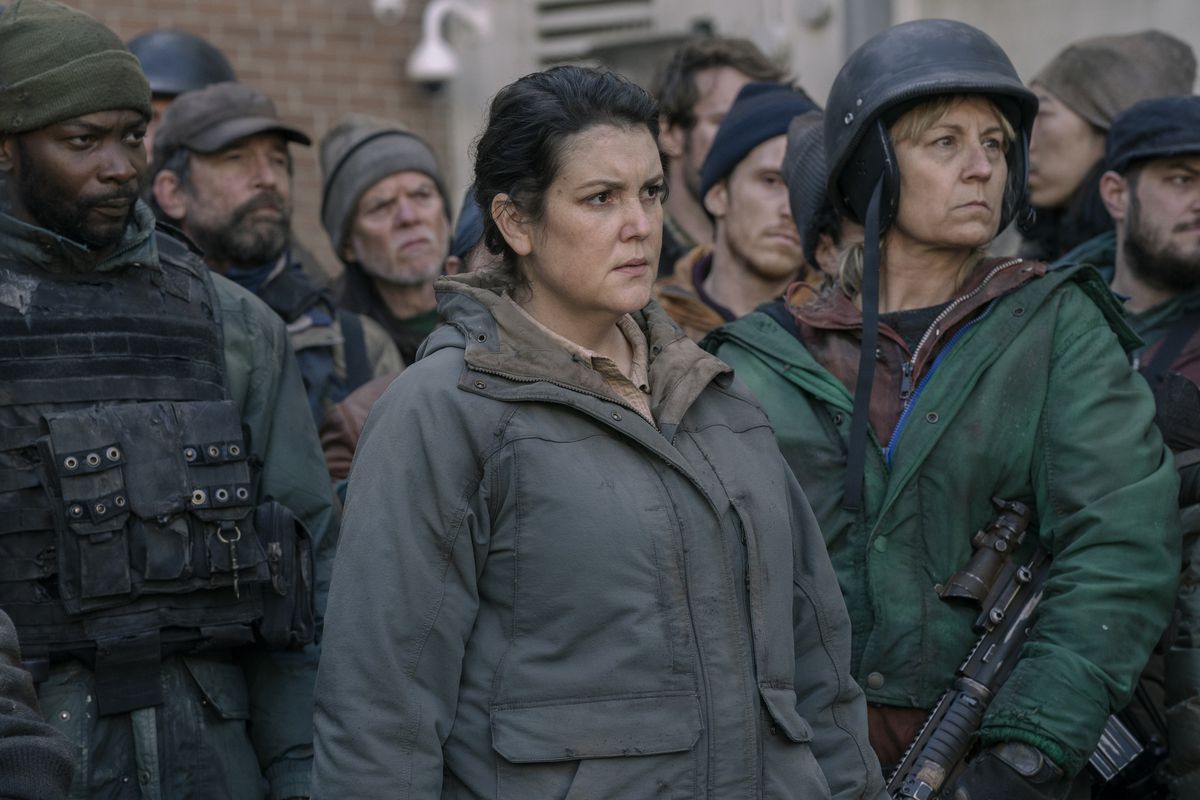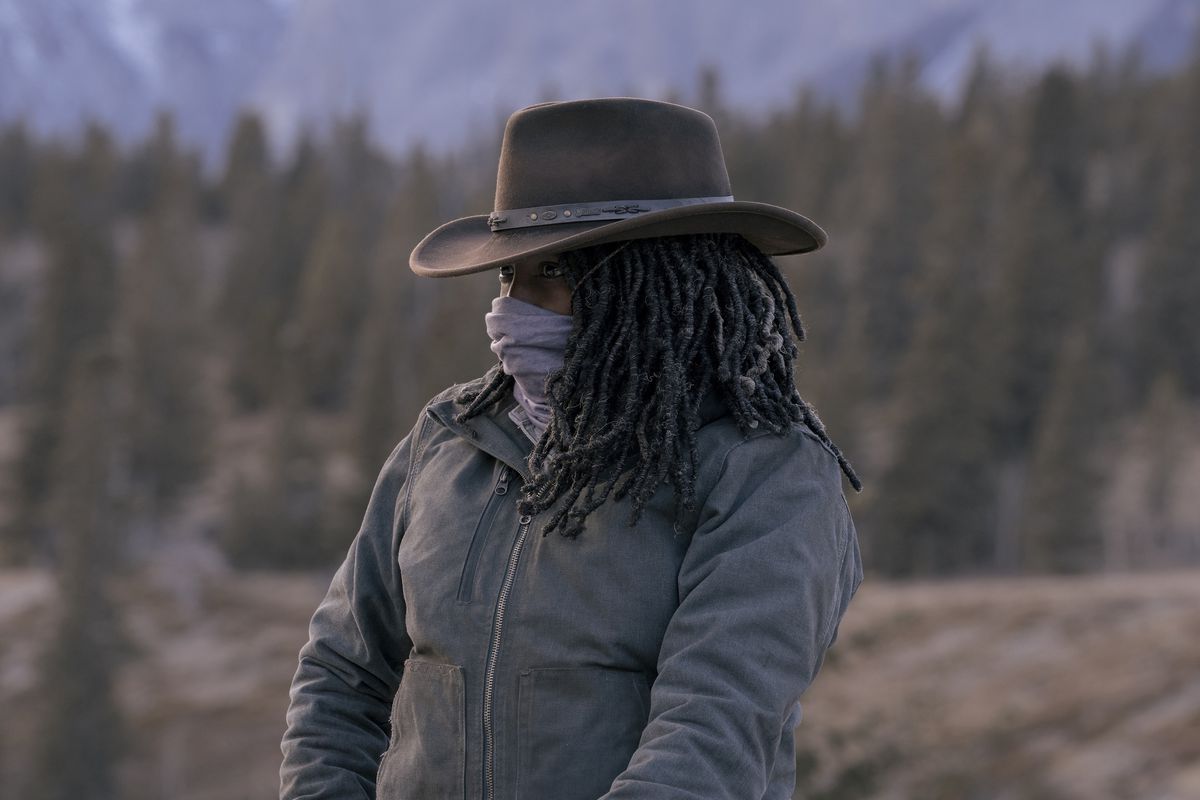Life in The Last of Us is hard, to put it extremely, extremely mildly. Traveling anywhere is tough and involves siphoning off 20-year-old gas from abandoned cars. Zombies are everywhere, in increasingly terrifying forms. No one will laugh at your pun book. Perhaps worst of all, there’s the sense that danger is all around, even from the other people around you.
The Last of Us universe is filled with factions, all clamoring to dominate in one form or another. Pretty much wherever Joel (Pedro Pascal) and Ellie (Bella Ramsey) find themselves, they find groups posing a threat, either trying to enlist them, menace them, or worse. In a world with so many contingents one might be forced to wonder: What is the difference between all of these factions? What do they all want? And what exactly is there to fight over in a post-apocalyptic wasteland anyway?
The short answer is power. They all want it, most are willing to kill to get it, and the difference is in who has it, or how much they are able to exert it. As a collective, The Last of Us’ factions further the aims of the show (and the game), each one its own exploration of how connections to others are their own threat in this world. But each group’s actual goal within the story is a little different, hence all the division.
[Ed. note: This post contains spoilers through episode 7 of The Last of Us.]
FEDRA
Photo: Shane Harvey/HBO
What they want: To be a government agency, ostensibly, and also govern the people (possibly by brutal means; see below).
The Federal Disaster Response Agency is the dominant ruling authority in The Last of Us’ United States. It’s a militarized government that oversees the quarantine zones, presiding with punitive force over cities around the United States. FEDRA clearly has some sort of unifying structure, but it seems individual chapters get a lot of leeway, as they do in Kansas City (again, more on that later).
At least in Boston, they operate with high-minded goals (even if they still appear to fall short). As one captain tells Ellie: “I care because no matter what anyone out there says or thinks, we’re the only thing holding this all together. If we go down, people in the zone will starve or murder each other, that much I know.”
Though they’re ostensibly the highest authority in the show (or at least the figures with the most organized power, including manufacturing necessary goods), The Last of Us doesn’t prominently feature them. Mostly they’re a force in the narrative, with soldiers lining the streets of Boston in the early episodes, sometimes attacking or bartering with Joel as part of his smuggling work. Still, we’ve heard about how harsh they are: Neither Ellie nor Joel seem to speak very highly of their education work, and when Frank (Murray Bartlett) bemoans that Bill (Nick Offerman) thinks the government is all Nazis, Bill yells: “The government are all Nazis!”
Frank’s rebuttal — “Well, yeah, now! But not then!” — doesn’t paint a rosy picture of what FEDRA does in the Last of Us’ 2023. But in episode 7, “Left Behind,” we at least get to hear the other side a bit. It’s not entirely optimistic; Ellie’s time at FEDRA school is basically a military academy, complete with getting put “in the hole” for misbehaving, and getting set up to be a FEDRA officer if she doesn’t wash out.
As you might expect from an authoritarian regime, that life has its perks. Being an officer affords her privileges that seem to be unique in the world of The Last of Us: eating well, getting a bed, staying at a comfortable temperature, and not going out on patrols.
Fireflies

Photo: Shane Harvey/HBO
What they want: To overthrow FEDRA and restore something closer to pre-outbreak governmental authority.
While at this point in the season we mostly understand the Fireflies as a small faction rebelling against FEDRA’s rule, the guerrilla network has groups around the country, and they seem to work together, at least to some degree (possibly more than FEDRA, though, again, it’s hard to tell). Marked as terrorists by the federal government, the Fireflies have been largely unsuccessful, though there have been a few cities where they’ve seen victories. Plus, they have graffiti all over the place — “When you’re lost in the darkness, look for the light” — and possibly the most powerful trump card in the world: a person with immunity to zombie bites.
It’s unclear, exactly, why the Fireflies would want to keep that a secret and not immediately use it to boost their profile against FEDRA. But it provides the reason to throw Joel and Ellie together and get them to Colorado. Plus, we know they at least sometimes have better connections than FEDRA — at least as Ellie seems to flaunt when she eats the chicken given to her by Boston Firefly leader Marlene (Merle Dandridge).
They recruit the way any good post-apocalyptic guerrilla organization does: observing rebellious teens like Riley (Storm Reid) sneaking around and then asking what they think of FEDRA (“fascist dickbags”). And they act the way one would expect from an organization like that, with Riley acknowledging that they do still bomb places like storage depots (even if she stresses they don’t do it “when civilians are around”).
Hunters

Photo: Liane Hentscher/HBO
What they want: To overthrow Kansas City FEDRA (specifically, at least for starters).
In episode 4 we’re introduced to the Hunters (as they’re known in the game), a group that has ousted FEDRA from their city. Though Kansas City is now freshly couped, the Hunters already command a lot of frightening machinery — like the “RUN” plow — and are quick to violence to exert their rule. They’re led by Kathleen (Yellowjackets’ Melanie Lynskey), who is eager to hunt down Henry (Lamar Johnson).
Per Joel and Henry’s conversation in episode 5, Kansas City FEDRA was bad even for a governing body considered to be authoritarian. “Monsters? Savages? Yeah, you heard right,” Henry completes Joel’s thought about KC’s FEDRA chapter. “Raped and tortured and murdered people for 20 years. And you know what happens when you do that to people? The moment they get a chance, they do it right back to you.”
And indeed, brutality seems to be how Kathleen is running things. Episode 5 opens with the Hunters overthrowing FEDRA, dragging bodies through the street and beating people. Kathleen questions FEDRA informants about Henry’s whereabouts before telling Perry (Jeffrey Pierce) to shoot them all and burn the bodies. By the end of the episode, Kathleen has said she’s willing to kill Ellie and Sam (Keivonn Montreal Woodard) simply because they’re associated with Joel and Henry.
It’s a particularly venomous villain turn, but when a little clicker girl comes out of nowhere to kill Kathleen — while the rest of her men are torn apart by a horde behind her — it seems like the Hunter inner circle has been taken out. Whatever fills the power vacuum left behind — well, Joel and Ellie don’t stick around to find out.
Jackson

Photo: Liane Hentscher/HBO
After many, many miles, Joel and Ellie arrive in Jackson, Wyoming, and find Tommy (Gabriel Luna). The Jackson community he’s part of is straight from The Last of Us Part 2, where it’s also run by Maria (played in the show by Rutina Wesley), at least partially. “No one person’s in charge,” she tells Joel and Ellie. “I’m on the council — democratically elected, serving 300 people, including children. Everyone pitches in, we rotate patrols, food prep, repairs, hunting, harvesting.”
Everything in Jackson — greenhouses, livestock, etc. — is shared through what Tommy calls “collective ownership.” Though he tries to reject the “communism” label Joel applies to it, Maria isn’t afraid: “It is that, literally. This is a commune; we’re communists!” Between actual electricity powered by the nearby dam and a peaceful, relatively normal existence, the Jackson faction exists in direct opposition to most of the other groups on this list. It’s an example for Joel and Ellie about how post-apocalypse doesn’t have to mean post-decency (though Maria does note that being in the middle of nowhere and maintaining a low profile helps them keep the “wrong people” out).
